Printmaking courses postscript
Both courses were a great success I think. In the end we 3 tutors joined forces, this meant that we could share ideas/resources and have more common ground for future courses.
We all felt that the students would learn the techniques more quickly and in a more lively fashion if they worked together and without reference to any of their previous work. So everyone started out on level (but possibly unsettling) ground and the whole day could act as something to draw on when people returned to their studios.
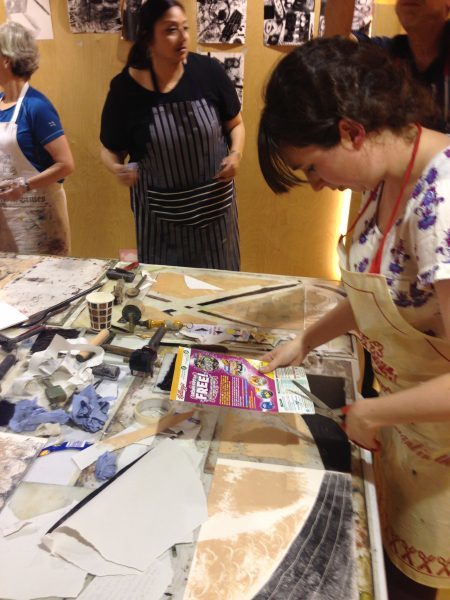
Pairs worked on plates with the idea of ‘a game’, taking it in turn to make complementary marks, Applying ink onto perspex sheets in diverse ways and then possibly taking areas off or modifying them. All of this as a way of applying ink to paper in an indirect fashion via the perspex. Just trying things freely that can later be used as a ‘vocabulary’ for making more personal work.
Kim gave a demonstration of how she might use a similar approach, interpreting a hasty field sketch to develop a large monoprint. Rolling out evocative colours of a linnet filled arable weed field…then taking out marks that represented linnet calls or seed heads.… all of of this setting up a space that linnets could then occupy.
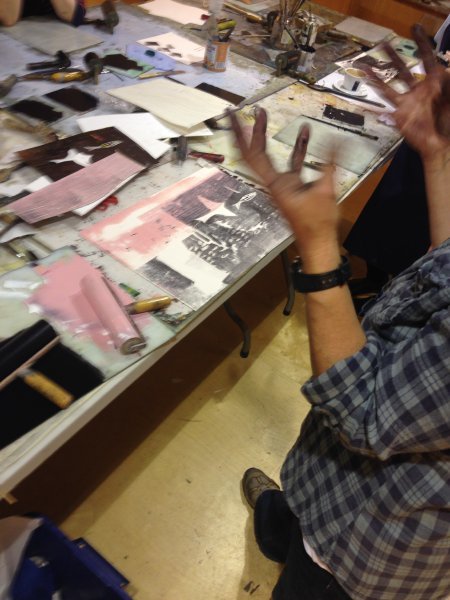
To give people a shared theme to work from Kim had brought along a box of found objects (eg. shells, dessicated plants, feathers, skulls, etc). Students selected one and then contemplated this in silence for a few minutes. Amazing how potent this seemed to me… after all the busyness of the ink manoeuvres, to have quiet intense concentration. Seeming allied to the way we might watch when preparing to sketch.
They then wrote, rather than sketched, hasty notes on the qualities of the object rather than how it looked… or any associations it might hold.
This writing was then the subject matter for their final print.
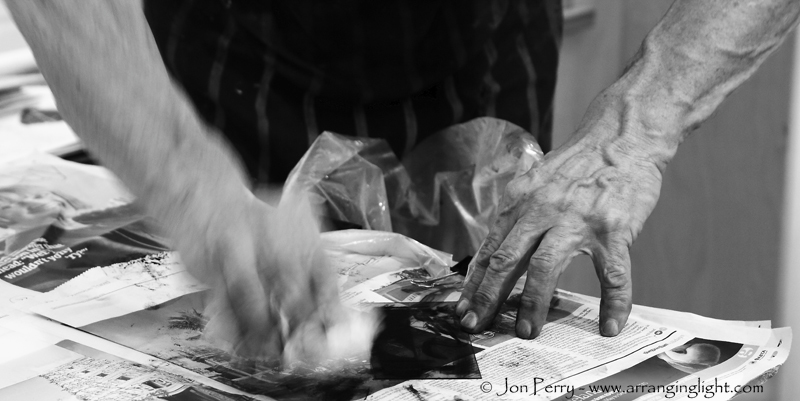
Drypoint is probably easier to teach than monoprint. Scratching into a polycarbonate plate, adding surface texture with carburundum paste… the marks trapping ink which is applied with muslin like tarlatan and then carefully wiped to give rich contrasts of tone and texture. It is then printed, needing damp paper and heavy press pressure to emboss all the subtleties of the block. The various stages help to pace the class, where monoprint can seem rather open ended and rather hard to keep the reins on.
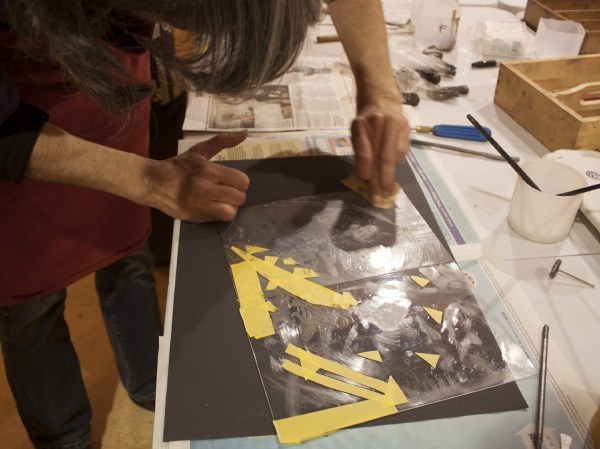
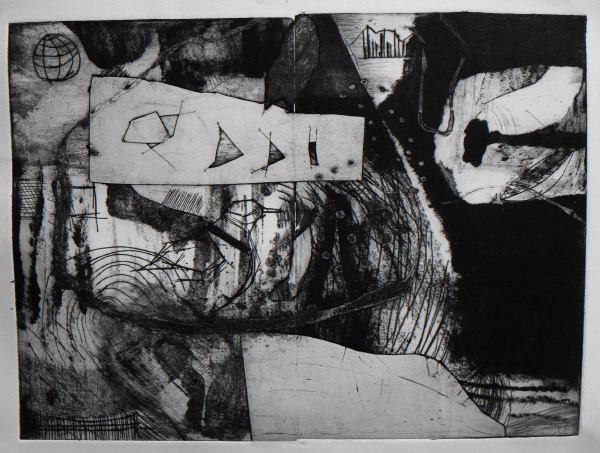
We got the students to cut their plates in half and swap them with their neighbours. They then joined the ‘foreign half plate’ with their own and intensively modified them before reprinting. The idea being that losing ownership of the image would increase how radically they might rework the imagery.
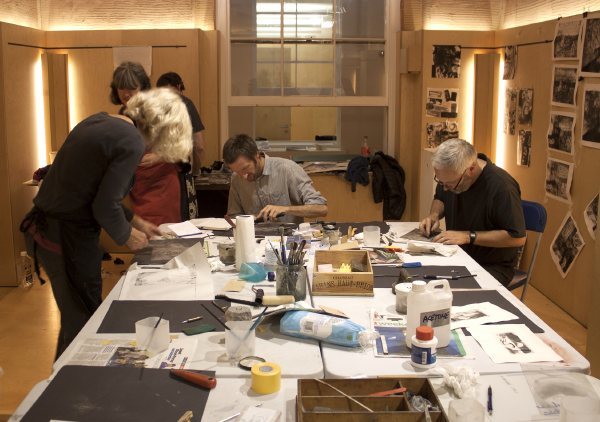
Thanks to Jon Perry who as well as making the drypoints managed to take some great photos (accredited above).